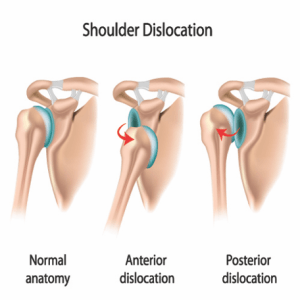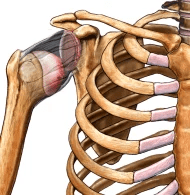Shoulder Instability
The shoulder is a ball-and-socket joint that has one of the largest ranges of motion in the human body. However, all this mobility comes with a price as it is more susceptible to becoming unstable, compared to other joints.

Most people have heard of someone dislocating their shoulder, which is usually due to a direct blow or fall. The high amount of force involved causes the ball of the arm bone, the humeral head, to move fully outside of the socket, called the glenoid cavity. This causes stretching and damage of the ligaments that hold this joint together. There could also be damage to the labrum, which is a bowl-like extension of cartilage that helps to deepen the socket your humeral head sits in. Dislocations have a high rate of recurrence. Therefore, someone who has dislocated once will have some form of instability even months after recovery. This makes it easier to dislocate the shoulder again in the future.

Shoulder instability doesn’t necessarily stem from a recent traumatic injury. It may also develop from an old injury, poor posture and weak muscle activation or repetitive movement patterns like throwing. A symptom you may feel is lifting objects or reaching in overhead positions just doesn’t feel right.
This loss of comfort and function can occur if there is stretched/damaged structures or even overly flexible ligaments. This may allow excess sliding movement to the humeral head than we would like.
Rotator Cuff Muscles
Stabilising muscles, known collectively as the “rotator cuff”, as well as the muscles of our neck and back acting on our shoulder blade, all help to carefully balance the humeral head in the glenoid during shoulder movement. Poor control of these muscles can create dysfunctional and restricted movement. This will further aggravate symptoms of instability and lead to other pathologies.
How Physiotherapy Can Help
Your physiotherapist can assess for instability as well as any poor movement patterns, and is a great first step.
Often there will be tight muscles and areas of restricted motion that need hands on treatment to allow better movement. Your physio will also prescribe exercises specifically for the muscles that will be essential in restoring stability and gaining long term results.
If you would like to see one of our physiotherapists for expert opinion, you can book online or give us a call on (02) 9267 3775.
This article was written by our Physiotherapist Nick Breit.

